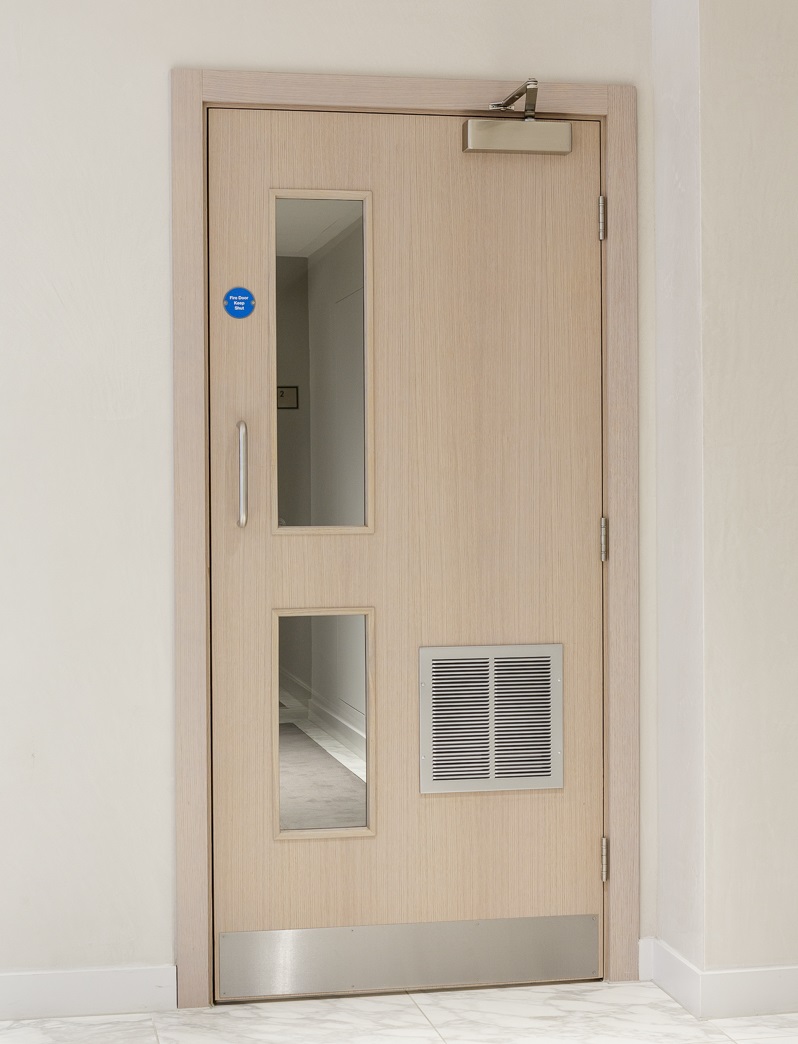- Home
- About BWF Fire Door Alliance
- Fire Door Safety
- Third-Party Certification
- Publications
- News
- Knowledge Centre

When we speak of a ‘fire door’ we are normally referring to a complete ‘fire door assembly’. The complete assembly brings together the fitting of all components necessary to ensure that the door achieves its fire and/or smoke performance, including ‘essential’ fire door hardware.
‘Essential’ fire door hardware are those items that are indispensable to the correct performance of the fire door, including:
A fire door can only be tested and certified with all its essential hardware components in place. Some certification bodies will only provide certification to a complete fire door assembly if they have been fitted with third-party certified hardware – for instance, this is the case for the Warringtonfire Certifire certification scheme. In all cases it is crucial that the fire door is fitted with the essential hardware as listed on the fire door certificate and supporting documentation.
When it comes to ‘Non- essential’ hardware, such as viewers and kickplates, it is also the case that the fire door certification and supporting documentation needs to be reviewed to ensure compatibility.
Fire door seals and smoke seals are also essential requirements and are covered separately – click here to visit the dedicated fire door seal page.
In the event of a fire, a fire door will not perform as intended unless all the correct components have been fitted correctly and maintained. When a fire door is specified, it should be delivered with a field of application that explains clearly any special provisions as needed for it to perform to its certificated rating.
The level of detail will depend upon the individual door. Below is an example of what that detail might look like:
Hinges
Closers
Latches
Click here to download the dedicated BWF Fire Door Alliance Fact Card on Fire Door
On this page, reference is made to the importance of third-party certification as a means of having confidence in the performance of a product. Third-party certification is a process of testing and verifying a fire door’s design, performance, manufacturing process and quality assurance of procedures and supporting documentation.